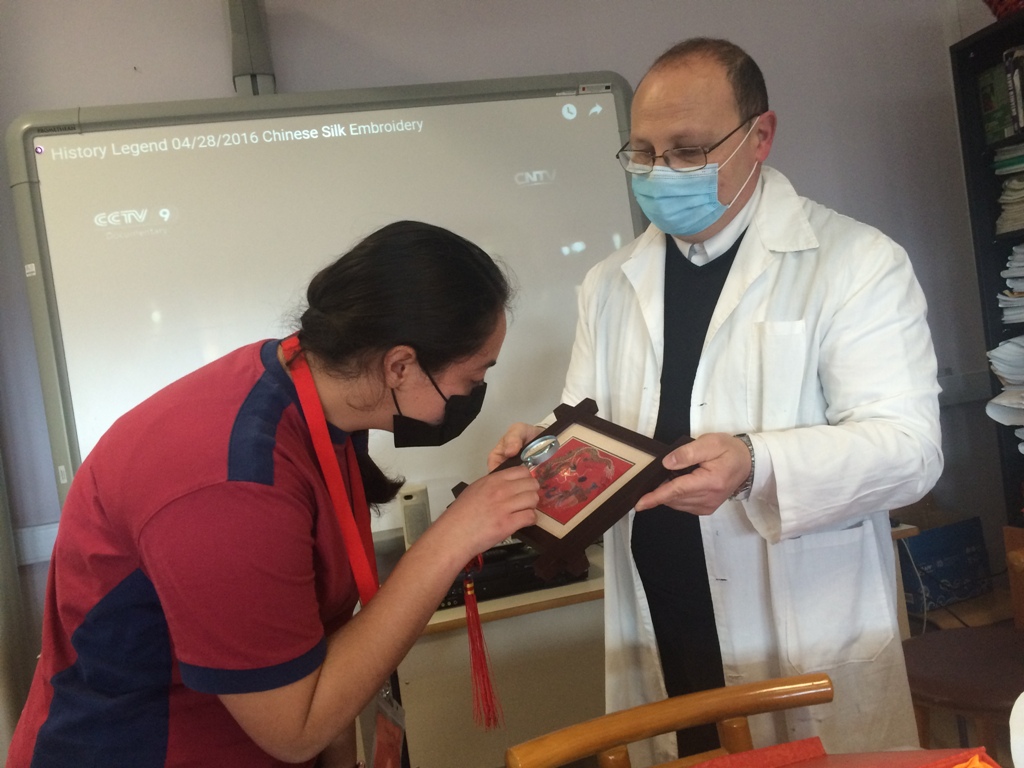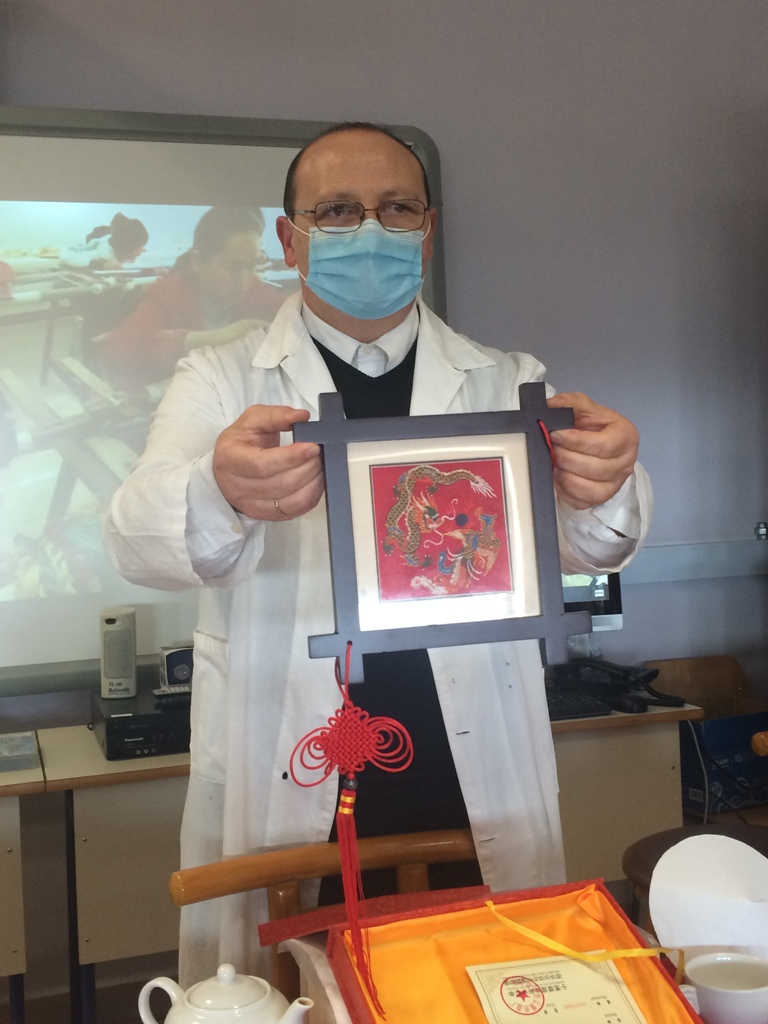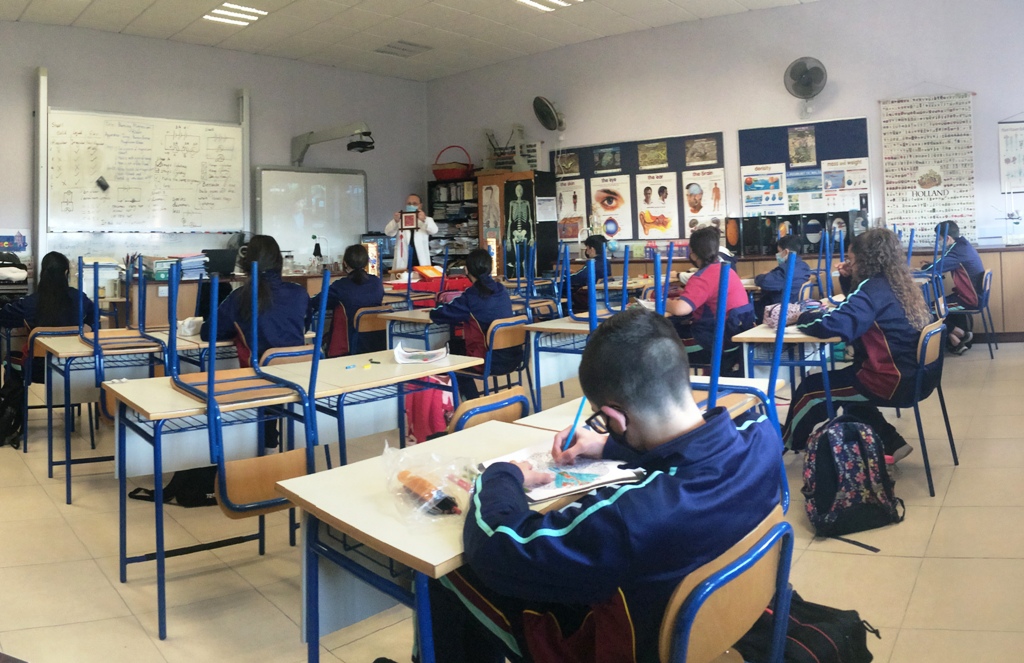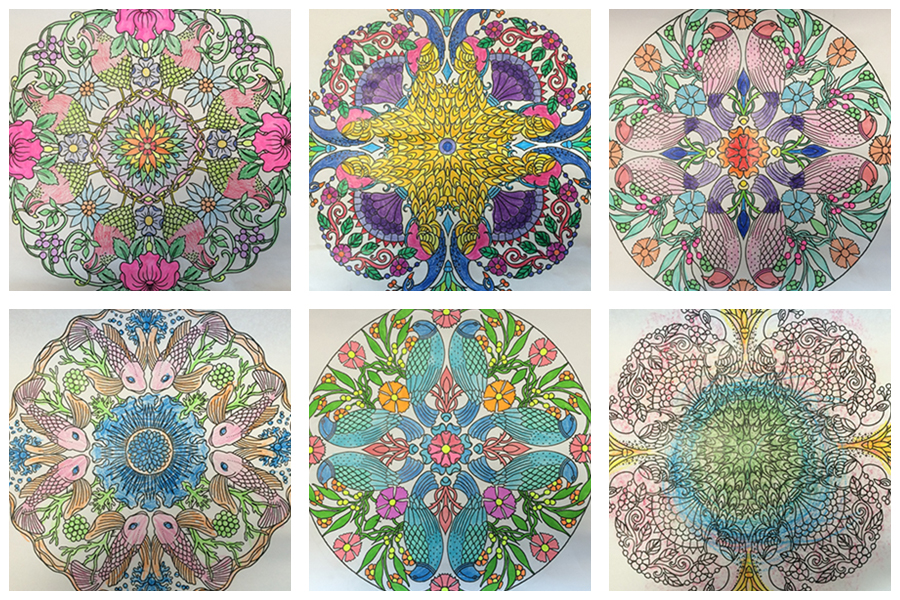A Replacement lesson at St. Margaret College Secondary School Verdala turns into an interesting project about Chinese Silk Embroidery

On Tuesday, 22nd March 2022, a replacement lesson with a Form 3 class at St. Margaret College Secondary School, Verdala, Cospicua was turned into an interesting project about Chinese Silk Embroidery. This project was held on the Science China Corner which was founded as a Montessori Method of teaching and learning.
China is world famous for the Su embroidery or ‘Su Xiu’ (苏绣). Su Embroidery originates in the city of Suzhou, hub city of Jiangsu province, China and it has a history of 2,500 years. It is distinguished from Xiang Embroidery (which originates in Hunan), Shu Embroidery (which originates in Sichuan) and from Yue Embroidery (which originates in Guangdong). Su Embroidery is made using the finest silk threads with balanced compositions made out of dense stitching and smooth finishing. Su Embroidery started with 10 basic stitches which then by time developed into more than 40 stitches. In the making process two famous techniques; the ‘even embroidery’ (Ping Xiu) and the ‘random embroidery’ (Luanzhen) are normally used. It was in 1930’s that Su embroidery master, Shouyu Lu invented the ‘random embroidery’ technique which, contrary to the neat, parallel stitches (adopted by the ‘even embroidery’ technique) makes use of oblique and crossing lines of silk threads with different colours. Random technique embroidery makes the silk embroidery patterns more vivid.

In China, Su Embroidery making is passed on from one generation to another and it takes many years to master. Su Embroidery entails various steps from design and stitching to mounting and framing and just one single piece can take months to complete.
In making Su Embroidery, silk thread is used and the threads are very fine. A single silk strand can be split into 96 finer threads and Su embroidery master, Jinzhen Gu won the Guinness Book of records for performing this delicate process within 3 minutes span of time.
In Su Embroidery, different thread thicknesses are also used to create different themes where for example thinner threads are normally used to make the tails of goldfishes and thicker threads to make the body of the fish.

Traditionally, Su Embroidery features birds and flowers, scenes from nature and ancient Chinese paintings but by time other themes became popular too.
Su Embroidery adopted new techniques and perhaps the most famous of all is Suzhou’s double-sided embroidery where a single image can be seen from either side. In fact, double-sided embroidery is the most complex method in the making process as artists need to simultaneously embroider two different patterns using one needle. It is considered the best of Su embroidery and each piece is considered a work of art.

Thanks to this Science China project about Chinese Silk Embroidery, students had the opportunity to observe the beauty and richness of a fine example of Su embroidery. They also watched an interesting documentary about Chinese Silk Embroidery (See: https://www.youtube.com/watch?v=sMP6qFtsV9I). Then students expressed their creativity in drawing an embroidery pattern which will be presented to a Su Embroidery manufacturer in China. Teacher Martin Azzopardi and his students offer special thanksgivings to the Malta China Cultural Centre and the China Embassy in Malta for their continuous help and support in fulfilling these projects.
Written by
St. Margaret College Secondary School Verdala Form 3 (Year 9) students: Yasmin Scicluna, Mifsud Yanik and Petja Nuutinen assisted by the Senior Science teacher Martin Azzopardi sdc.

